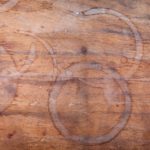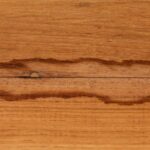Wood is a timeless, durable, and versatile material used for many pieces of furniture.
From dining tables to floorboards, coffee tables, nightstands, cabinetry, and sideboards, you’re guaranteed to have at least one wooden surface in your home.
However, wooden furniture is not immune to stains that can ruin its appearance.
Whether you’re dealing with a water ring, a burn mark, or a deep-set dark stain, knowing how to remove stains from wood is crucial if you want to maintain your home aesthetic.
In this guide, we explore various methods to tackle different types of stains on wood.
From moisture stains to burn marks and dark blemishes, we cover how to remove every kind of stain you might face.
Read on for all you need to know!

How Do You Get Stains Out of Wood?
Wood stains come in various forms, and the approach to removing them depends on the type and severity of the stain.
Below are some methods to address the three most common types of wood stains: water stains, burn marks, and dark stains.
Top Tip: Before attempting any stain removal method listed below, it’s essential to test it on a small, inconspicuous area of the wood to ensure it doesn’t cause damage or discolouration.
Moisture stains
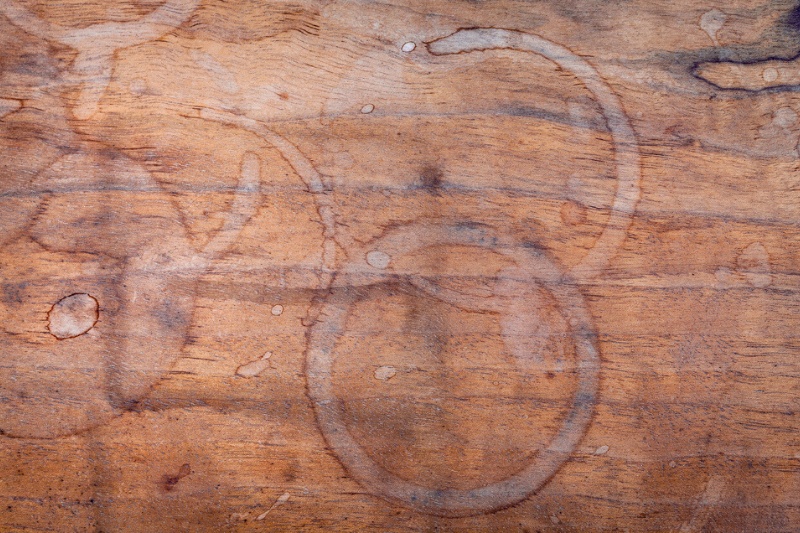
Moisture stains, often seen as white rings or spots on wood surfaces, are caused by the interaction of water and the finish on the wood.
Here are several methods you can use to remove these unsightly moisture marks:
- Ironing method: Place a clean, white cloth or towel over the moisture stain and set your iron to its lowest heat setting. Gently iron the cloth, moving it in circular motions for about 15 to 20 seconds. The heat from the iron will help lift the moisture from the wood, removing the white stain from its surface.
- Use mayonnaise or petroleum jelly: Apply mayonnaise (it’s weird, but trust us!) or petroleum jelly to a microfibre cloth and rub the stain in circular motions. For tougher stains, apply a small amount directly to the watermarks and leave it overnight. Wipe it off the next day using a clean cloth, and the stain should be noticeably diminished.
Burn stains
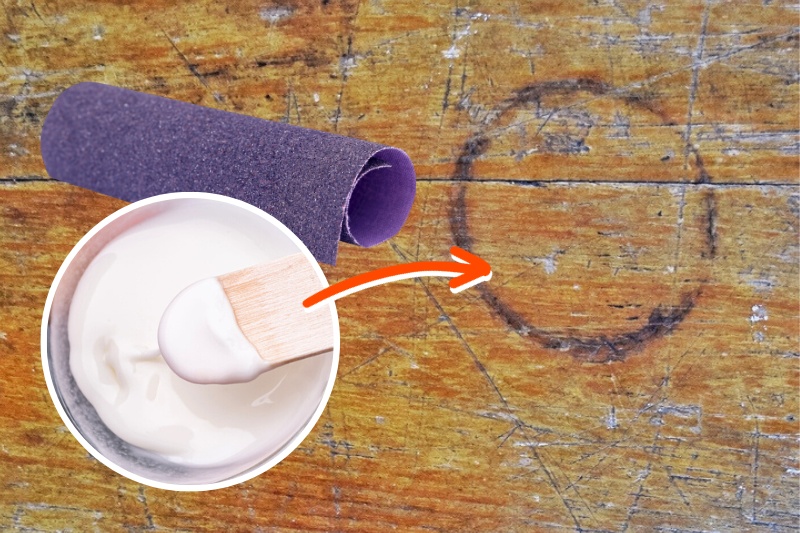
Burn marks can occur when a hot object comes into contact with wood, leaving a dark and discoloured area.
To effectively remove heat marks from wood, try one of the following methods:
- Sand the area: Use fine-grit sandpaper to gently sand the burn mark, either by hand or by using a sanding tool. This removes the top layer of the wood and is excellent for dealing with surface-level burns. Be careful not to sand too aggressively, as this can damage the wood further and leave an uneven surface.
- Bicarbonate of soda paste: Mix bicarbonate of soda (also known as baking soda) with water to create a cleaning paste. Apply the paste to the burn mark and let it sit for a few hours or overnight for more severe burn marks. Gently wipe it off using a clean microfibre cloth and assess the results. Repeat if necessary.
Dark stains

Dark stains such as wine spills or ink stains on wood can penetrate deep into the wood fibres.
Removing these stains requires a bit more effort than burns or moisture marks, which are typically surface-level stains.
Here are two effective methods you can try:
- Vinegar and olive oil: Mix equal parts of white vinegar and olive oil in a bowl. Dip a clean microfibre cloth in the mixture and use it to apply it to the stain, rubbing gently in the direction of the wood grain. Let the cleaning solution sit for a few hours or overnight, then wipe it off. The stain should be lighter and less noticeable.
- Hydrogen peroxide and bicarbonate of soda: Create a strong cleaning paste by mixing 3% hydrogen peroxide and bicarbonate of soda. Apply the paste to the stain, cover it with plastic wrap, leave it for a few hours, and then wipe it away. Hydrogen peroxide should clean away deep-set stains and dry the wood out, preventing moisture stains at the same time.
How Do You Remove Stains From Wood Without Stripping It?
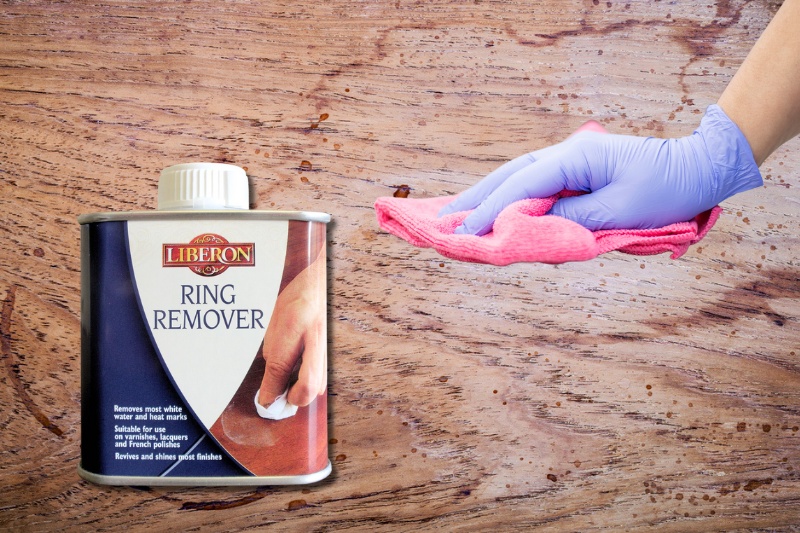
The above stain removal methods are so effective that they not only eliminate the stain—they may also start to strip the wood stain used to colour the wood and provide a protective coating.
In these cases, you must stain the newly exposed surface beneath after treating the stain.
This is an extra but vital step in making your wooden furniture and flooring look as good as possible, both now and in the future.
It ensures that the treated area matches the rest of the piece of furniture or flooring and restores its protective finish to help prevent future damage.
In other words, it’s crucial for the appearance and protection of your wooden furniture.
However, we understand that this extra step isn’t for everyone.
If you want to remove stains from wood without stripping its finish, consider the options below:
- Mineral spirits: Mineral spirits are effective at lifting dirt, grime, and stains without harming the finish of the wood. Remember to test in an inconspicuous area first to ensure no damage will occur. Then, dampen a cloth with mineral spirits and gently rub the stained area using circular motions. The mark should start to lift from the wood.
- Commercial stain removers: Various commercial stain removers are available specifically designed to remove marks from wood surfaces while preserving the finish. One of our favourites is Liberon Ring Remover, which is available on Amazon. Follow the manufacturer’s instructions for the best results.
How to Prevent Wood from Staining
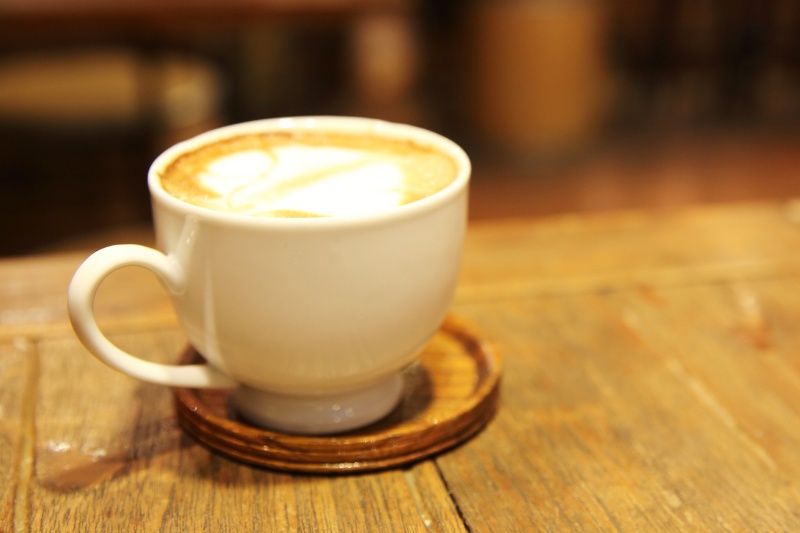
Although the above cleaning practices can remove most stains from wooden surfaces, prevention is a better solution.
In fact, it’s key to maintaining the beauty of your wooden furniture and floors. Here are some top tips you can employ to protect your wooden surfaces:
- Use coasters: One of the easiest ways to avoid stains is to use coasters, placemats, and tablecloths to protect wooden tables. Hot dishes can easily burn wooden surfaces, condensation from cool glasses leads to water rings, and food spills can lead to dark stains. Putting something between the table prevents these stains from forming.
- Apply a protective finish: A lacquer or varnish coating to wood protects against moisture stains. Most store-bought furniture already has a protective finish, but older pieces or second-hand furniture might need re-coating. You can purchase varnish or lacquer from most hardware stores and apply it at home, or take your furniture to a professional.
- Clean spills quickly: If anything does spill on a wooden surface, clean it up as quickly as possible. The faster you act, the less likely the stain will set or travel deep into the wood fibres. Regularly cleaning wooden floors and furniture to remove dust, dirt, and grime is also crucial and can highlight any stains early on.
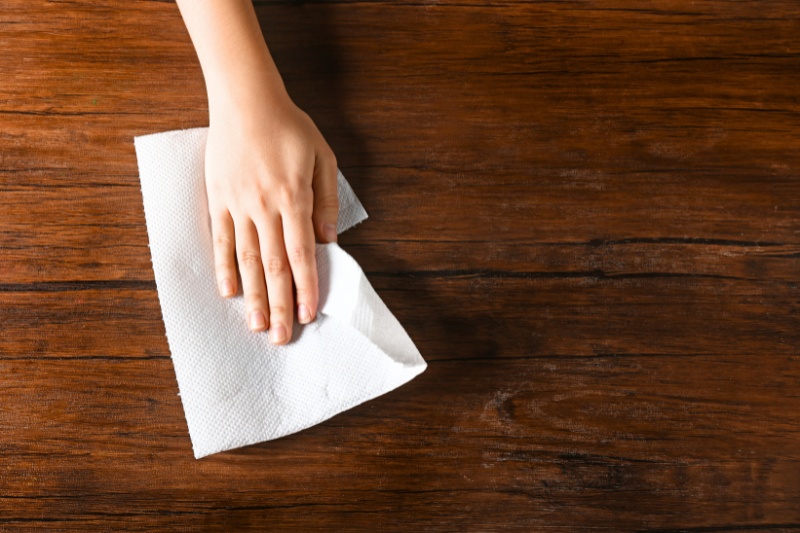

Hannah has a passion for cleaning. She worked her way around Australia by cleaning hostels in exchange for free accommodation and used her cleaning skills to bag a job as a chalet host for a luxury ski company in France.

